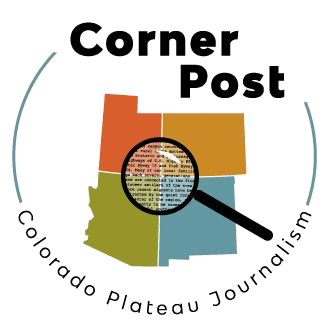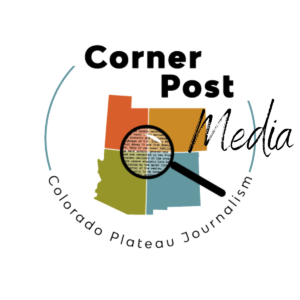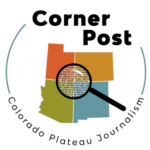
In-Depth
Bad Asses! Burros are Destroying Horseshoe Canyon


by Emily Arntsen – 03.17.2022 – 20 min. read
Deep in the gorges of Horseshoe Canyon, a remote offshoot of Utah’s Canyonlands National Park in the Hans Flat region of eastern Wayne County, an animal wheezes and whimpers as if choking.
It’s only a wild donkey braying. But the haunting cry ricochets off the sandstone walls and lingers in the otherwise serene canyon.
These now-wild descendents of domesticated donkeys are called burros, and they have wreaked ecological havoc in the region surrounding Horseshoe Canyon on and off since the 1920s when one rancher left the area and turned his pack animals loose.
“The burros are easily the biggest problem we face in Horseshoe Canyon,” says William Leggett, a National Park Service (NPS) ranger stationed near Horseshoe Canyon. He kicks a pile of donkey droppings off the trail to prove his point.
Though donkeys were initially introduced to the Americas by way of Spanish explorers, the species originates in the deserts of northern Africa. In the absence of natural predators, burros have flourished in the arid climate of the American southwest as ranchers and miners have abandoned them over time. Today, the Bureau of Land Management (BLM) estimates more than 14,000 wild burros roam across the United States.
In the distance, the small herd of burros in Horseshoe Canyon stops braying and resumes eating, unfazed by the presence of humans. Leggett explains that each burro consumes about seventeen pounds of vegetation per day, and unlike cattle which only eat the tops of plants, burros tear out the entire root system as they graze.
“This place used to be covered in Indian ricegrass,” Leggett says, gesturing to the barren, tumbleweed slopes at the bottom of Horseshoe Canyon. The native grasses have been replaced with invasive Russian thistle, which the burros have no interest in eating. Instead, the burros prefer the dwindling supply of native grasses and cottonwood and willow seedlings, a diet Leggett fears will have consequences far into the future as trees and larger vegetation fail to mature.
One of the burros folds itself to the ground to wallow on its back. Many equines roll in the dirt to groom themselves and cool off, but in doing so, the burros in Horseshoe Canyon crush delicate soil crusts that take decades to form. “Once the crust is compromised, nothing holds the soil in place,” Leggett says. “When the wind blows sand across the canyon, it creates dunes that are impossible for plants to inhabit.”
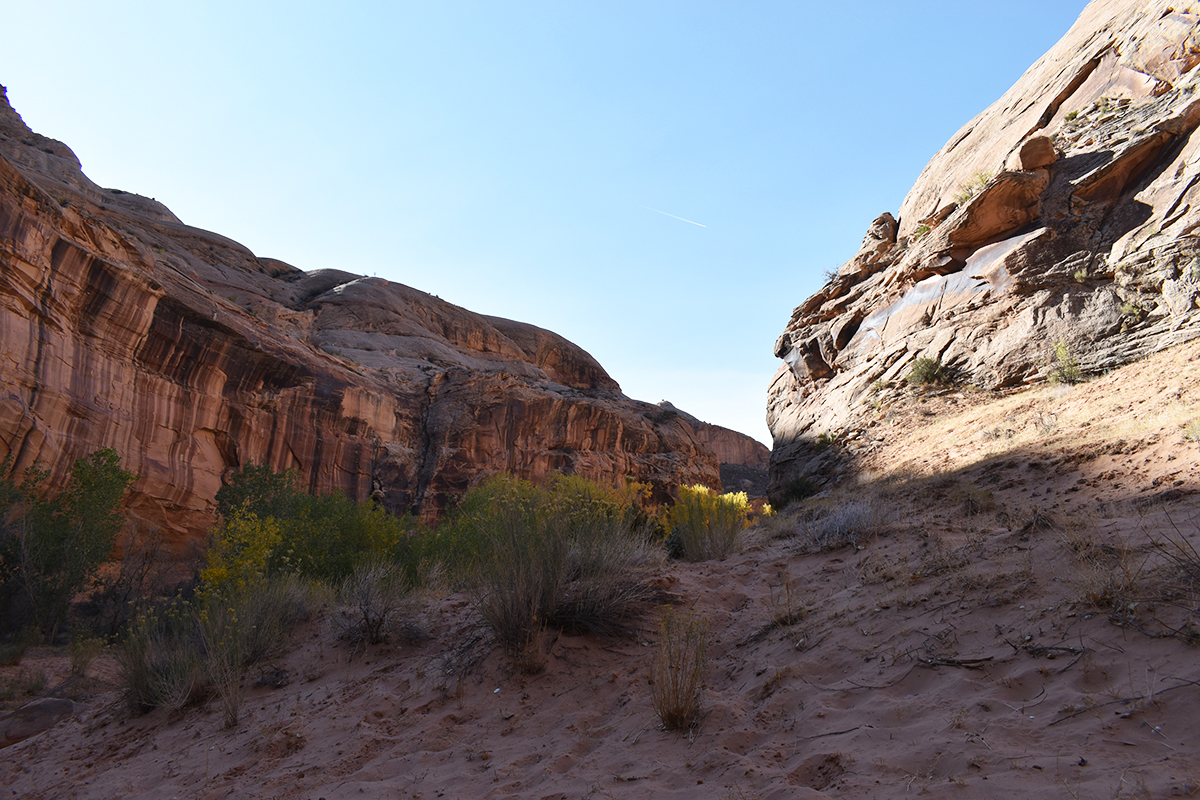
For Leggett, the damage in Horseshoe Canyon is especially distressing because the area is a significant cultural site for indigenous artifacts and home to some of the world’s most impressive petroglyphs and pictographs.
The cultural history of the canyon begins back when mammoths still roamed the earth. Nomadic Paleoindians took respite in the chasm to carve tools and roast meals, the remnants of which can still be seen in the arrowheads and charcoal pits found in the area today.
Thousands of years later, the Desert Archaic people came through and decorated the walls of their seasonal home with etchings and paintings of limbless specters. Many of the scenes depicted in the panels include bighorn sheep, which have since been pushed out of the canyon by the burros that outcompete with the native species for food and water.
“It takes away from the experience when you get down into the canyon, and you see feral livestock congregating around the same water sources that the people who created those panels congregated around,” says Leggett. “No one wants to see piles of manure underneath these ancient panels of petroglyphs.”
The panels are world-famous and attract people from around the globe. “We get 12,000 visitors to Horseshoe Canyon each year,” Leggett says. “The damage done by the burros far outweighs the impact made by thousands of tourists each year.”
And the destruction only compounds over time. Leggett says the population of a herd can double every five years. Today, about 300 burros live throughout Canyonlands National Park’s several districts.
In Horseshoe Canyon, though, the herd is currently only eight burros strong. Considering the amount of ecological destruction caused by a mere eight animals, one would assume the federal land stewards responsible for protecting this region would simply remove or cull the herd and solve the problem.
But because of the Wild and Free-Roaming Horses and Burros Act of 1971, interfering with wild horses or burros—which includes capturing, harassing, branding, or killing—is a federal crime punishable by up to a year in prison or a $2,000 fine.
Under this act, wild horses and burros, neither of which are native to the Americas, are as heavily protected as endangered species in the United States and are the only invasive species to enjoy protection under federal law. In Horseshoe Canyon, for example, one employee’s entire job is dedicated to removing invasive tamarisk and Russian thistle vegetation, Leggett says.
Wild horses and burros fall under the jurisdiction of the BLM and the United States Forest Service (USFS), not the NPS–even when animals are found on land managed by the park service. As such, the park service’s responsibility to safeguard the ecology of park land is often at odds with the protections afforded to burros.
“Our obligation is to protect and preserve the natural and cultural resources within the park boundaries, and part of that management strategy is to remove invasive species,” Leggett says. But because the herds fall outside of the NPS’s jurisdiction, the NPS is doubly burdened with needing to protect the park by managing the herds without much of the funding or authority to do so.
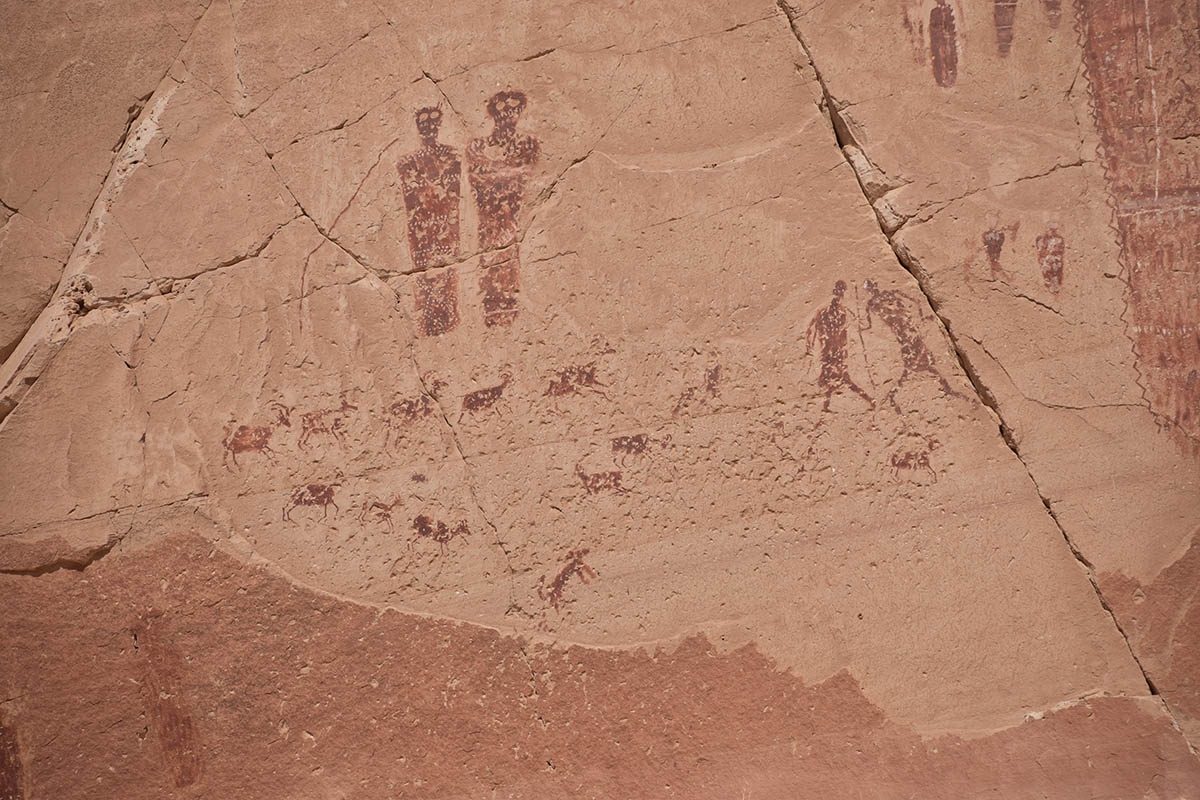
Because of this, recent efforts to remove the burros from Horseshoe Canyon have been unsuccessful. In 1986, the herd was driven out of the canyon, and a wooden and barbed wire fence was installed across the canyon’s southern boundary to prevent burros from re-entering the area. According to a report by Canyonlands National Park, the ecosystem of the canyon began a slow recovery in the years after the burros were pushed out, until 2015, when park visitors damaged the fence. Unable to resist the fresh spring water in the canyon, the burros returned through the broken barricade, and despite an attempt in 2018 to repair it, a small herd of burros has remained in Horseshoe Canyon ever since.
If the burros are the biggest challenge the NPS faces in Horseshoe Canyon, one might think that more robust measures would be taken to repair the fence. But Leggett says the cost of corralling the burros out of the canyon and fixing the fence is fairly taxing on the NPS’s budget.
“When we’re driving the burros out or constructing a fence, that’s labor costs and material costs that are coming directly out of our internal budget,” Leggett says. “When we do these drives, there are upwards of ten people involved. And if each drive takes ten hours, and each of those people are being paid $20 an hour, that’s a significant cost.”
This spring, the NPS hopes to successfully repair the fence. “We’ve decided to airlift the materials into the canyon,” Leggett says. He estimates that the materials alone will cost around $4,000, and the helicopter could be upwards of $10,000.
In 2021, the BLM spent $112 million to manage wild horse and burro herds across the U.S. Managing the herds includes making sure the animals stay on BLM land, corralling animals for adoption programs, sterilizing animals to maintain low populations, and taking inventory of herd numbers.
Costs aside, however, any organization tasked with managing the herds must also face serious political challenges. “We have to be very careful not to cause a public relations scandal,” Leggett says. “When we talk about managing the herds, there are a lot of legal issues, but there are even more political issues. The group who advocates for the wild horse and burros is very loud and very passionate.”
Much of the American identity is wrapped up in nostalgia for the Wild West, a mythology in which mustangs play a crucial role. A country-wide grassroots campaign to protect wild horses and burros from large-scale slaughters began gaining momentum in the 1950s.
At the height of the movement in 1971, Congress unanimously passed the Wild and Free-Roaming Horses and Burros Act, largely at the behest of horse-lovers who campaigned to save these animals, which, though they are not originally from the West, were deemed “living symbols of the historic and pioneer spirit of the West,” as defined in the act.
No part of the movement nor the ensuing legislature took the environmental toll of these animals into account. Gus Warr, the BLM’s Wild Horse and Burro Program director in Utah, says the attitude toward wild horses and burros changed overnight. “One day the employees were given rifles, and the next they were out on the range trying to protect the herds,” he says.
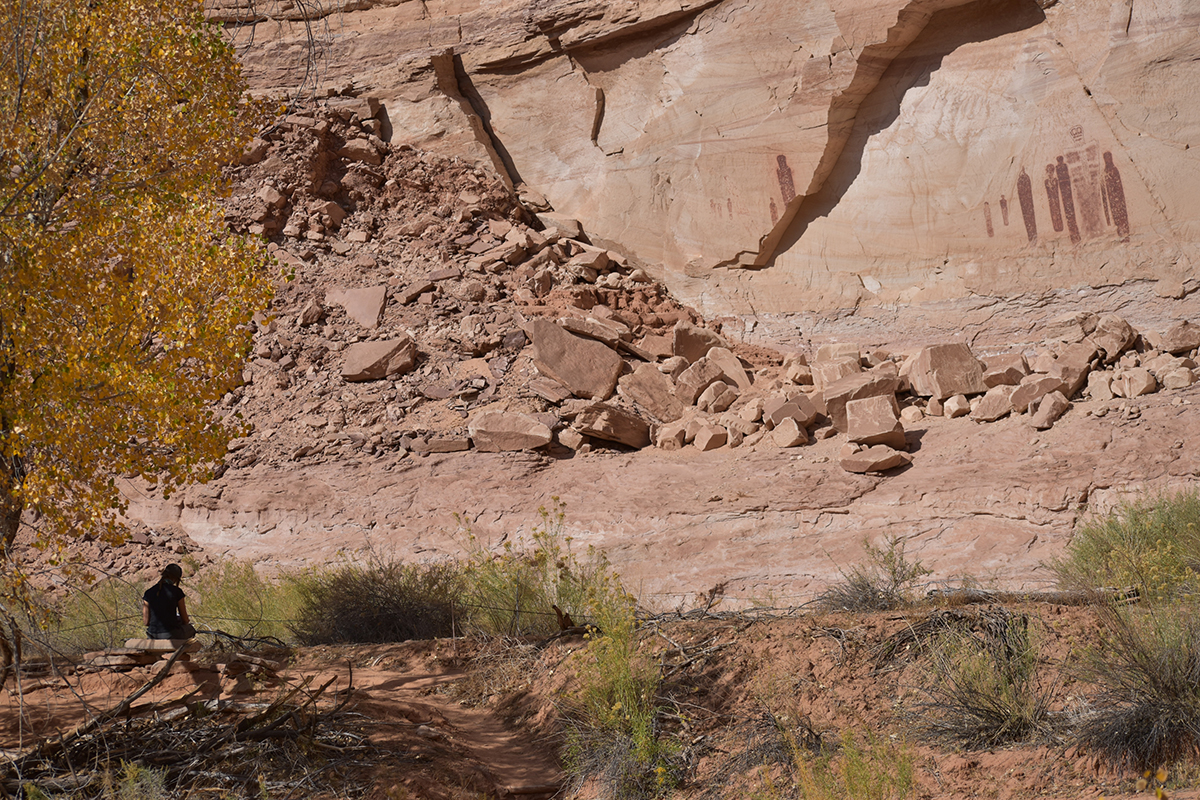
But the fervor to protect mustangs and burros is not extended to other animals that now run wild and cause ecological destruction across the country. For example, the Department of Agriculture encourages the use of “lethal techniques,” including, in some states, an unlimited, year-round hunting season, to control the invasive wild boar population. Unfortunately for the wild boars, they are considered neither cute nor living symbols of the American spirit.
In addition to federal land stewards and animal rights advocates, ranchers, too, have an interest in the wild equine debate. Stanton Gleave, a rancher who grazes his cattle on federal land adjacent to Horseshoe Canyon, has partnered with the NPS to petition the BLM to remove the burros from the region. Of the 300 burros the NPS reports in the Canyonlands area, Gleave believes about 200 of those live on the property he leases from the government. “I’m looking at six of them right now drinking out of my well,” he said during a phone call. “It’s expensive putting in those wells. That water isn’t for them.”
Gleave says that during years when there is plenty of rain, his allotment produces enough vegetation to feed his cattle and the burros both. “But last year was a dry year, and we had to bring the cattle home and feed them on hay here,” he says. “It gets expensive feeding them that way.”
At the request of Gleave and the NPS, the BLM is taking inventory of the burro situation in Horseshoe Canyon and the surrounding region to assess how best to proceed.
As far as long-term solutions go, Leggett believes garnering public support for protecting the integrity and the ecology of historic sites such as Horseshoe Canyon is a worthwhile step toward reversing the damage. Because the BLM and the NPS are somewhat beholden to public opinions, the loudest demands are often respected.
“Unfortunately right now, there’s not that same passion for protecting everything that the burros displace, whether that’s vegetation or other animals, as there is for the wild horses and burros themselves,” Leggett says. “If enough people speak up about the burros, the park and the BLM might start acting with a little more urgency.”
Republish
Republish Our Content
Corner Post's work is available under a Creative Commons License and under our guidelines:
- You are free to republish the text of this article both online and in print (Please note that images are not included in this blanket licence as in most cases we are not the copyright owner) but:
- you can’t edit our material, except to reflect relative changes in time, location and editorial style and ensure that you attribute the author, their institute, and mention that the article was originally published on Corner Post;
- if you’re republishing online, you have to link to us and include all of the links in the story;
- you can’t sell our material separately;
- it’s fine to put our stories on pages with ads, but not ads specifically sold against our stories;
- you can’t republish our material wholesale or automatically—you need to select stories to be republished individually;
- you have to credit us, ideally in the byline; we prefer “Author Name, Corner Post,” with a link to our homepage or the article; and
- you have to tag our work with an editor’s note, as in “This article was paid for, developed, and originally published by Corner Post. Corner Post is an independent, nonprofit news organization. See cornerpost.org for more.” Please, include a link to our site and our logo. Download our logo here.
 Emily Arntsen moved to Moab, Utah in 2020. She writes for the local newspaper and other publications about the people, the history, and the ecology of the Colorado Plateau. Before moving west, Emily worked in Boston, Massachusetts as a science writer and radio producer.
Emily Arntsen moved to Moab, Utah in 2020. She writes for the local newspaper and other publications about the people, the history, and the ecology of the Colorado Plateau. Before moving west, Emily worked in Boston, Massachusetts as a science writer and radio producer.
